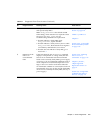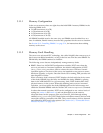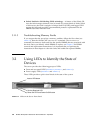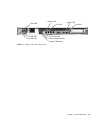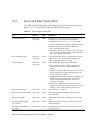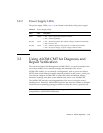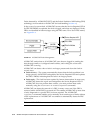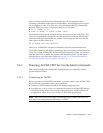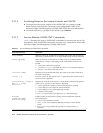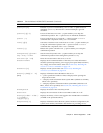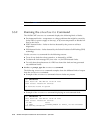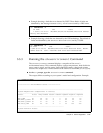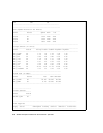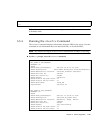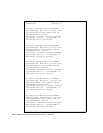
Chapter 3 Server Diagnostics 3-13
Many environmental faults can automatically recover. A temperature that is
exceeding a threshold might return to normal limits. An unplugged power supply
can be plugged in, and so on. Recovery of environmental faults is automatically
detected. Recovery events are reported using one of two forms:
■ fru at location is OK.
■ sensor at location is within normal range.
Environmental faults can be repaired through the removal of the faulty FRU. FRU
removal is automatically detected by the environmental monitoring and all faults
associated with the removed FRU are cleared. The message for that case, and the
alert sent for all FRU removals is:
fru at location has been removed.
There is no ALOM CMT command to manually repair an environmental fault.
The Solaris Predictive Self-Healing technology does not monitor the hard drive for
faults. As a result, ALOM CMT does not recognize hard drive faults, and will not
light the fault LEDs on either the chassis or the hard drive itself. Use the Solaris
message files to view hard drive faults. See Section 3.6, “Collecting Information
From Solaris OS Files and Commands” on page 3-44.
3.3.1 Running ALOM CMT Service-Related Commands
This section describes the ALOM CMT commands that are commonly used for
service-related activities.
3.3.1.1 Connecting to ALOM
Before you can run ALOM CMT commands, you must connect to the ALOM. There
are several ways to connect to the system controller:
■ Connect an ASCII terminal directly to the serial management port.
■ Use either the telnet or the ssh command to connect to ALOM CMT through
an Ethernet connection on the network management port. ALOM CMT can be
configured for either the telnet or the ssh command, but not both.
Note – Refer to the Advanced Lights Out Management (ALOM) CMT Guide for
instructions on configuring and connecting to ALOM.



